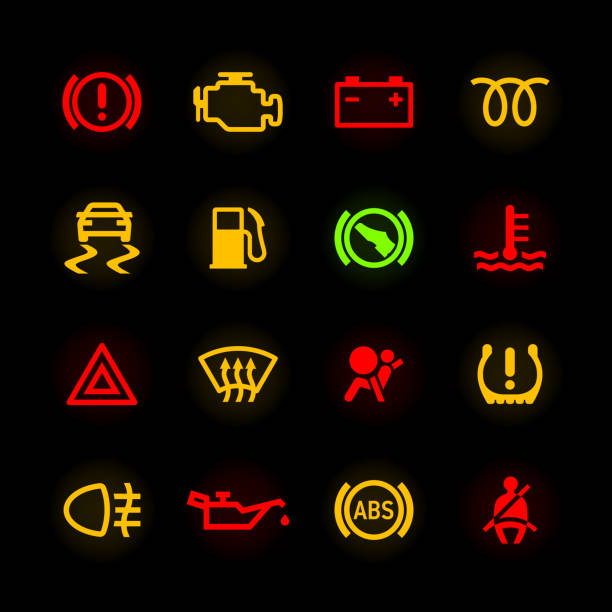We’ve all been there: You’re driving along, enjoying the views, and all of a sudden you hear a beep—you look down, and a symbol has appeared on your dashboard. You start to wonder what could be wrong with your car.
Some symbols on your car’s dashboard are easier to figure out than others. However, it’s important to know exactly what these warning lights mean in case you need to pull over and call for help.
Types of Car Dashboard Symbols
Not every symbol that appears on your dashboard is a warning light. Some have to do with vehicle features (like lights and cruise control) or safety (like blind-spot monitoring and lane departure warnings) or mechanical issues (like low tire pressure and engine temperature warnings).
When it comes to dashboard lights, colors matter! Green or blue lights simply let you know that a system is on or operating. Orange/yellow warning lights generally signify that your vehicle needs to be serviced or repaired soon. These warnings are less urgent than if you have a red and/or flashing light.
A red light means that you should take action immediately! Some red dashboard lights are safety warnings (like a seat belt reminder) and others are mechanical (like the engine overheating). If a red mechanical light appears, pull over as soon as possible and figure out what’s going on. Your vehicle will likely stop working or become damaged if you continue to drive.
As you read through this list, here are two things to keep in mind:
- Every car is different, so the symbols on your dashboard may vary slightly from the ones on our list. If in doubt, consult your vehicle’s owner’s manual!
2. Many of these dashboard lights will illuminate briefly when you turn on your vehicle and performs a system check. As long as the lights turn off within a few seconds, everything is operating normally.
18 Common Warning Lights on Your Car’s Dashboard
1. Oil Pressure Warning Light
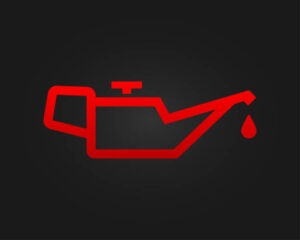
What It Means:
This old-fashioned oil can symbol indicates that there is an issue with your car’s oil pressure system. Either you’re running low on oil or your oil pump isn’t circulating enough fluid to properly lubricate the surfaces inside your engine. (NOTE: Some car dashboards will display the word “OIL” instead of this symbol.)
What to do when the Engine Oil Pressure Warning Light shows up?
Poor engine lubrication can cause major engine damage, so this is an important warning to pay attention to!
- The most important part of keeping your vehicle in a good condition is to keep a check on the oil level.
- When the Oil Pressure Light turns on, the first obvious step is to check the oil level of the engine in either of the cases.
- If there is a low oil level, make sure to refill the engine. In such a situation, you must change your oil of the vehicle. An oil change is considered as spring-cleaning quite often.
- It is advised to change the conventional oil every 3000-5000 miles and synthetic oil must be changed every 5000-7000 miles.
- However, every car is different and so is climate, thereby, one must also consider factors like weather, driving frequency, and car mileage.
- You must not avoid changing the oil in your vehicle because it causes junk to build up which in turn damages the engine of the vehicle
2. Tire Pressure Warning Light
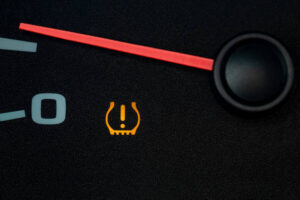
What It Means:
Also known as the Tire Pressure Monitoring System (TPMS) symbol, this image signals an issue with your tire pressure or the TPMS.
If the TPMS symbol is solid, then the pressure in one or more of your tires is too low or too high. If the TPMS symbol flashes for 60-90 seconds when you turn on your vehicle and then stays illuminated, even if your tires are properly inflated, then something is wrong with your TPMS sensors.
What to do when the Tyre Pressure Warning Light shows up?
Driving on low- or high-pressure tires is unsafe and can cause damage to your tires.
- Whenever the tire pressure warning light comes on, it is time to check the tire with a tire pressure gauge.
- A periodic check (preferable monthly) is very much recommended for your vehicle’s tires to prevent them from wearing out too soon.
3. Engine Temperature Warning Light
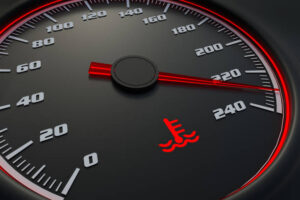
What It Means:
If you see this symbol pop up, it means that your engine is overheating. This most likely has to do with your coolant (also called antifreeze), but it can happen for a variety of reasons.
What to do when the Engine Temperature Warning Light shows up?
- First, try turning off the A/C and turning the heater on to redistribute heat to the passenger compartment. In a situation where the temperature warning light gets turned on, you should immediately stop the car and pull over to the side of the road.
- Shut down the engine and open the bonnet to let it cool down. Do not open the radiator while the engine is hot.
- After doing so, you must try to find the main cause of overheating. Check if any of the above-mentioned reasons have occurred.
- Once the engine has cooled down, you can open the radiator cap or reservoir to check the coolant level. Do it slowly with the help of a rag or cloth to release the air pressure.
- Check the cooling water. Add water or coolant to the radiator if it is found to be low in level. Also, check if the water is at the risk of leakage.
- If neither of the mentioned methods helps, it is recommended to take your vehicle to the servicing centre and check it out.
- Carrying out a radio pressure check at the mechanic’s will help in checking an internal leak or cracked engine block.
What will happen if you ignore the Engine Temperature Warning Light?
- If you do not stop during engine overheating, the engine will start knocking causing ring, piston, head gasket damage.
- According to excessive heat, the internal parts of the engine will expand resulting in metal-to-metal occurrence.
- Severe overheating also causes thermal stress and leads to cracking or warping.
4. Traction Control Light
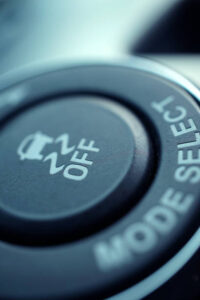
What It Means:
This car symbol indicates that your vehicle’s traction control system is activated. The traction control system uses your anti-lock brake system (ABS) to determine if one wheel is spinning faster than the others. If it detects that a wheel is slipping, it applies the brakes until the car regains traction. This is most helpful if you’re driving in rain or snow.
What to do when the ABS (Anti-Lock Braking System) Warning Light shows up?
- As there are so many reasons as to why the ABS light came on, the appropriate measure will depend on the reason. So the very first step would be to try to determine the reason for the same.
- If the light turns on every time you turn on the vehicle and turns off after sometimes, it is known as Bulb Check and it happens to let you know that all the warning lights are working properly. Thus, it is suggested to take your car to a professional to get it checked.
- If the lights do not turn on while the ignition is turned on, you should check the bulb. A burned-out Dashboard should be replaced without delay.
5. Anti-lock Braking System (ABS) Warning Light
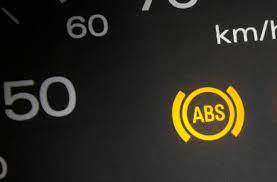
What It Means:
When you brake hard, like on slick roads, the ABS pulses the brakes to prevent your wheels from locking up. If the ABS warning light is illuminated, it means that something is wrong with the system.
What to do when the ABS (Anti-Lock Braking System) Warning Light shows up?
- As there are so many reasons as to why the ABS light came on, the appropriate measure will depend on the reason. So the very first step would be to try to determine the reason for the same.
- If the light turns on every time you turn on the vehicle and turns off after sometimes, it is known as Bulb Check and it happens to let you know that all the warning lights are working properly. Thus, it is suggested to take your car to a professional to get it checked.
- If the lights do not turn on while the ignition is turned on, you should check the bulb. A burned-out Dashboard should be replaced without delay.
6. Traction Control Malfunction Light
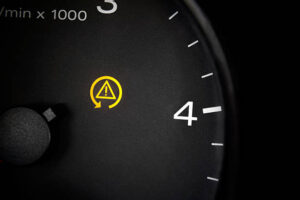
What It Means:
This light indicates that your vehicle’s traction control system might have a broken or damaged sensor or some other malfunction. In some cars, the same control module operates the ABS and the traction control system, so sometimes this dashboard light comes on when there are problems with your ABS.
What to do when Traction Control/TCS Warning Light shows up?
While this won’t affect your everyday driving you should get it checked soon to make sure your vehicle will operate safely in inclement conditions.
(or)
- When the Traction Control Light comes on, first try to find out the cause of such happening and take steps accordingly.
- Very often, the light can be temporarily turned off. There is a switch marked TCS OFF or ESC Off, however, if you switch it off, it will come back on once you restart the vehicle.
- If you look forward to solving the problem permanently, take your vehicle to a professional in a servicing centre. If the car is not checked, there is a chance of the car spinning or sliding out causing an accident.
7. Engine Warning Light (Check Engine Light)
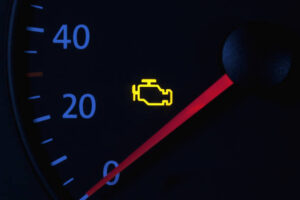
What It Means:
Your check engine light may appear for a variety of reasons. Sometimes it is triggered by an open, loose or cracked gas cap, which causes fuel to evaporate. But sometimes it indicates a serious issue, like low oil pressure or overheating! (NOTE: Some car dashboards will display the words “CHECK ENGINE” instead of this symbol.)
What to do when the Check Engine Warning Light shows up?
If you haven’t noticed a change in the way the car drives and you don’t notice any unusual sounds or smells, you can continue driving a moderate distance.
If the check engine light is red and/or flashing, you should stop driving immediately! In most vehicles, a flashing check engine light signals that you have a major problem that could cause serious damage to your engine if you ignore it.
In either case, make sure to get the light checked and the problem repaired as soon as possible.
(or)
- When the Check Engine Warning light comes on, you should first try to find out if the problem is one of the above reasons.
- Once done, you can check your dashboard lights and gauges for oil pressure or overheating.
- You can try reducing the speed. You can also try tightening your gas cap.
- If the above steps do not help, take your vehicle to a servicing centre for professional help.
8. Battery Alert Light
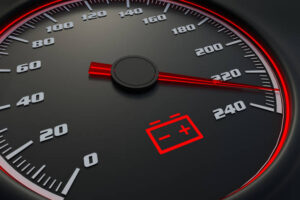
What It Means:
This light signifies a problem with the vehicle’s charging system. Possible culprits include a loose or damaged battery cable, a bad alternator, or another electrical fault. You may notice your clock light fading or your headlights dimming. Or, in some cases, your car may not start at all.
What to do when the Battery Charging Warning Light shows up?
- Today’s cars come with a rechargeable 12-Volt battery. The battery is responsible for the functioning of the ignition system, the headlights, radio and so on. It is very much essential for you to get your battery checked once the light gets turned on.
- Since a car is entirely dependent on the battery, thereby other warning lights might fail to show any problem if the battery dies out. Along with the alternator, the car also has a voltage regulator, which keeps the battery charged. Take your vehicle to the servicing centre and get the battery system check.
9. Low Fuel Indicator Light
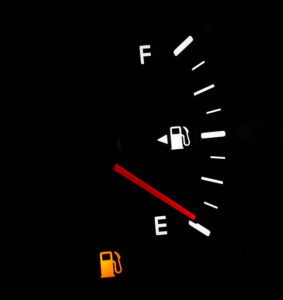
What It Means:
You’re likely familiar with this dashboard light (maybe a little too familiar!). It simply means your vehicle is running low on fuel.
What to do when Fuel Indicator Warning Light shows up?
If you still have a ways to go, don’t push your luck! You never know how weather or traffic patterns will play out, so it’s best to stop at the nearest gas station and fill up.
Bonus tip: Most vehicles have a triangle-shaped arrow next to the gas pump icon on your fuel gauge. This arrow indicates which side of the vehicle the fuel tank is on!
(or)
It might not be a situation of emergency when the light comes on at first. But it is advised to get the filter drained as soon as possible. If you wait too long, the water will build up and in turn damage the system. It is advised that you take the car to professional experts.
10. Automatic Shift Lock or Engine Start Indicator Light
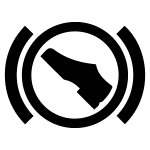
What It Means:
If you see this dashboard symbol, you’re most likely trying to shift gears or start your ignition without engaging the brake. The automatic shift lock will lock your vehicle in park or neutral until you engage the brake.
What to do when the Automatic Shift Lock/Engine Start Indicator warning light shows up?
If your car shift lock is stuck, the following things can be done to release it:
- Engage the emergency brake or the parking brake.
- Insert a key, nail file or screwdriver into the slot.
- Press the brake pedal.
- Shift gears as you normally would.
- Find the shift lock override slot.
- If the car is stuck and you are unable to get out of parking, it may indicate the shift interlock solenoid is malfunctioning. If none of the above steps helps, then seek a professional’s assistance.
11. Seat Belt Reminder Light
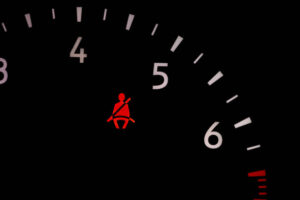
What It Means:
This car light simply reminds you or your passenger to fasten your seatbelts. It is usually accompanied by a repetitive dinging noise.
Buckle up! Seat belts decrease serious crash-related injuries by about 50%.
What to do when the Seatbelt Reminder Warning Light show up?
- It is quite obvious that there is nothing one can do in such a situation except fasten the seatbelts. Ignoring the sign will not affect the drivability but there will be a higher chance of getting injured in case of accidents.
- It has been seen that most drivers and the front seater simply fasten the seat belt from their back and do not wear it. By doing so, they are just making themselves more prone to accidents.
12. Airbag Indicator Light
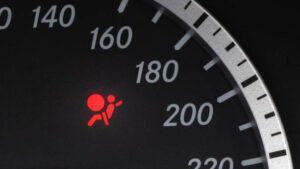
What It Means:
The airbag warning light signals that something is wrong with one of your airbags or the entire airbag system.
What to do when the Airbag Warning Light show up?
- One must not ignore the Airbag Check light and get it immediately checked after by a professional.
- The professional will look after the data in the ECU where all the data are stored.
- You must also avoid driving your car in such a situation. Because, in case of accidents, your car’s airbag will not be released and can lead to heavy injury.
13. Security Indicator Light
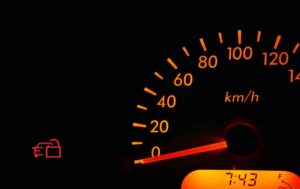
What It Means: If your vehicle has an anti-theft system, then this symbol will blink steadily when the security system is armed. If it is solid and the car will not start, then the immobilization system has activated due to a security threat or malfunction. If it is solid and the car is running normally, then the security system is malfunctioning and needs to be fixed.
What to do when Vehicle Security Warning Light shows up?
If the vehicle is immobilized, follow your vehicle’s guidelines for how to deactivate the security system. If it’s a malfunction, your security system will not work correctly until you have it repaired.
14. Fog Lamp Indicator Light

What It Means: This symbol shows that your fog lights are on.
Fog lights should only be used if your visibility is less than 100 yards. If you turn them on unnecessarily, they can make it difficult for other drivers on the road to see.
What to do when the Fog Lamp Warning Light/Indicator shows up?
- If the weather outside is foggy, then it is necessary to use fog lights for better visibility. However, a lot of drivers often forget to turn it off when the weather is clear.
- It is advised to turn off the fog lights when it is not needed so that the bulb does not burn out.
- If the fog lights are on without any reason, it is advised to get the same checked by a professional. Since their life span is very short, it might cause a problem in using them when necessary.
15. Washer Fluid Indicator Light
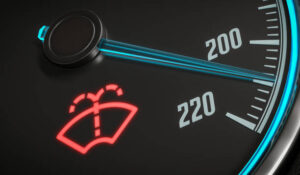
What It Means: Imitating the motion of your windshield wipers, this dashboard symbol means that you’re low on windshield washer fluid.
What to do when Windshield Washer Fluid Warning Light shows up?
- You might not need washer fluids all the time. But sometimes they become extremely necessary. It is important to keep the tank full and not allow it to dry out.
- It is advised not to ignore the sign and get your reservoir full and/or in other conditions to get your sensors checked.
16. Brake Warning Light
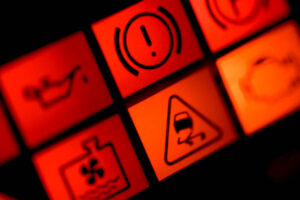
What It Means: If you see this symbol on your dashboard or the word “BRAKE” in red, then either the parking brake is engaged or there’s a problem with your braking system.
What To Do when Break Warning Light Shows Up?
First, stop and check to see if your parking brake is engaged. Try setting and releasing the brake while your vehicle is in park. If the light is still on even when the parking brake is unengaged, have your car towed to the nearest Tire & Auto for service.
17. Lane Departure Warning Light
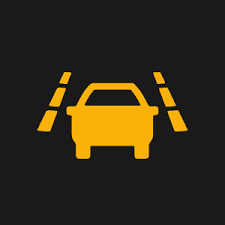
What It Means: Most cars produced today come with a lane departure warning safety feature. It activates this light on your dashboard and makes a beeping noise when it detects that your vehicle is drifting out of your lane.
What To Do When Lane Departure Warning Light Shows Up?
Correct your steering, if needed. (The light may come on when you are purposefully changing lanes.)
18. Transmission Temperature Warning Light

What It Means:
If this symbol appears on your dashboard, it means that your transmission is overheating. This could be caused by low transmission fluid, worn transmission parts, heavy towing or something else.
What To Do When Transmission Temperature Warning Light Shows Up?
Pull over as soon as it’s safe and turn off the vehicle. Wait for the vehicle to cool down before attempting to drive again and get to a repair shop as soon as possible. If the light won’t go off and you have a ways to go, it’s best to call for a tow.
19. Electric Power Steering Warning Light
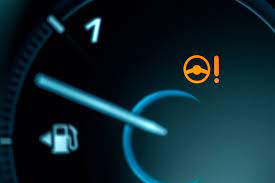
What It Means:
Cars with an electric power steering have this warning light. This simply means that there is some problem with your power steering system.
What to do when Power Steering Control Warning Light shows up?
Pull over as soon as it’s safe and turn off the vehicle. Wait for the vehicle to cool down before attempting to drive again and get to a repair shop as soon as possible. If the light won’t go off and you have a ways to go, it’s best to call for a tow.
- The first step would be to check the level of the power steering fuel. (if possible)
- If the fuel is found to be on an acceptable level, then check the power steering control unit with an OBD2 scanner. Only an advanced OBD2 scanner can read trouble codes.
- Other reasons for the power steering warning light could be a faulty steering wheel angle sensor or a defective fuse.
- If you drive your car with the power steering warning light on, then you might incur serious damages to the power steering. Hence, it is recommended to get it to a repair shop for rectification.

